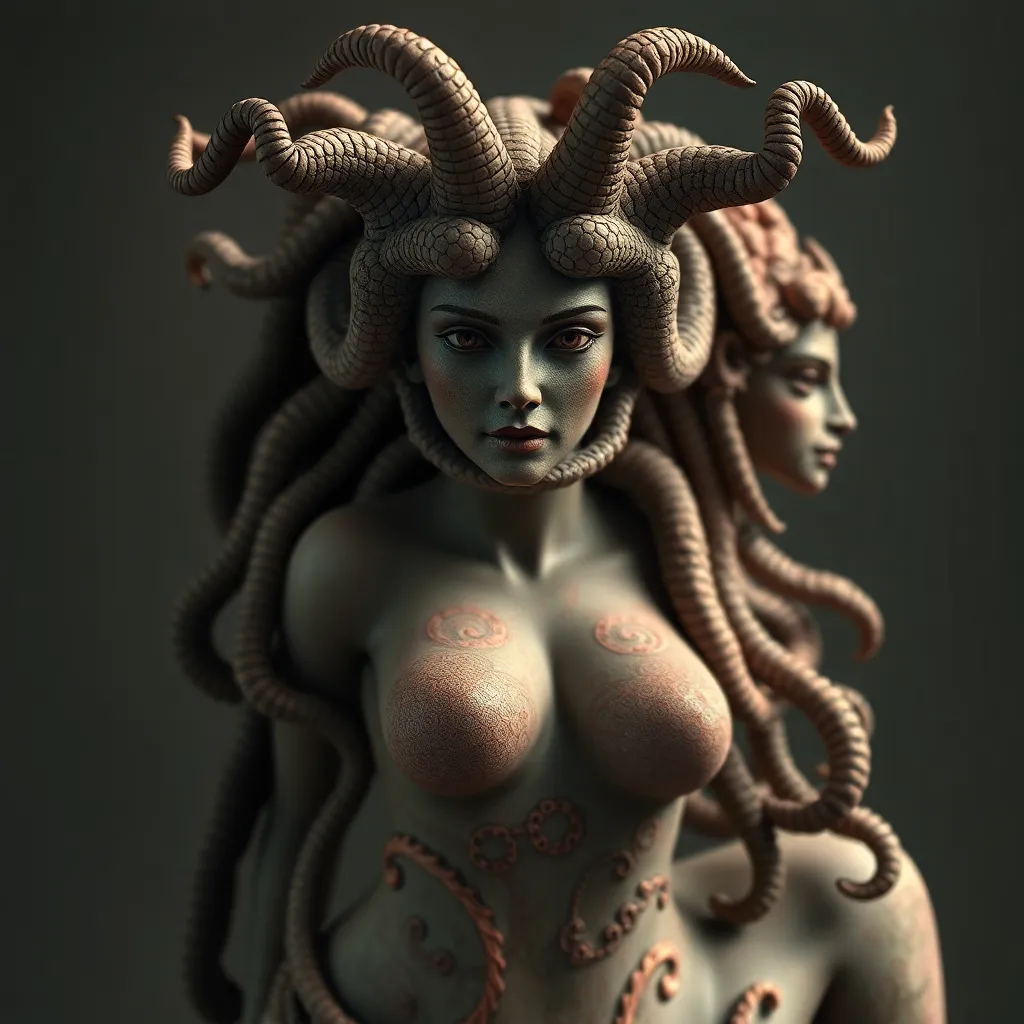Medusa’s Sisters: Exploring the Lives of the Other Gorgons
Introduction to the Gorgons
The mythology of the Gorgons is a rich tapestry woven into the fabric of ancient Greek lore, embodying themes of beauty, monstrosity, and the duality of female power. Among the Gorgons, Medusa stands out as the most famous, often depicted as the ultimate monster with snakes for hair and a gaze that turned men to stone. However, her sisters, Stheno and Euryale, also possess unique stories and attributes that deserve exploration. Understanding the lesser-known Gorgons not only enriches the narrative of Medusa but also highlights the diverse representations of femininity in mythology.
The Gorgon Family Tree
The origins of the Gorgon lineage can be traced back to primordial sea deities. The Gorgons were the daughters of Phorcys and Ceto, two ancient figures associated with the dangers of the sea and the monsters that inhabit it. This lineage sets the stage for the Gorgons’ roles in mythology as beings that straddle the line between beauty and terror.
- Phorcys: A sea god often depicted as a monster himself, representing the unknown depths and fears of the ocean.
- Ceto: A goddess associated with the dangers and creatures of the sea, embodying the fearsome aspects of femininity.
Medusa’s sisters, Stheno and Euryale, complete this trio of Gorgons, each with distinct characteristics and stories that add depth to their shared legacy.
Stheno: The Fierce Protector
Stheno, the eldest of the Gorgons, is often characterized by her ferocity and strength. Unlike Medusa, who was eventually cursed, Stheno remained immortal and is known for her fierce protective nature.
- Characteristics: Stheno is described as having a terrifying appearance, with sharp fangs and hair made of living snakes. Her intimidating presence is a deterrent against any who wish to harm her or her sisters.
- Role in Mythology: Stheno is often depicted as a guardian, fiercely protecting the lair of the Gorgons. Her strength is celebrated in various myths, where she often battles heroes who seek to defeat her sisters.
Her relationships with other mythical figures, such as her interactions with Perseus, demonstrate her unwavering loyalty and ferocity in defense of her family.
Euryale: The Enigmatic Sister
Euryale is perhaps the most enigmatic of the Gorgon sisters, often portrayed as having a haunting beauty that contrasts sharply with her monstrous nature. Her unique traits set her apart and add intrigue to the Gorgon narrative.
- Description: Euryale is known for her hauntingly beautiful voice and striking appearance, which belies her fearsome powers. In some accounts, she is said to possess the ability to cry tears of gold.
- Contributions to Gorgon Lore: Euryale’s role often involves interactions with other mythical beings, where her powers can create chaos or beauty, depending on the context.
Her interactions with heroes and gods, while less documented than those of Medusa, illustrate a complex character who embodies both allure and danger.
The Transformation of the Gorgons
The mythological origins of the Gorgons’ monstrous forms are steeped in tragedy and transformation. While Medusa’s transformation is well-known—cursed by Athena for her beauty and transgressions—Stheno and Euryale were born as Gorgons, not subjected to the same fate as their sister.
- Medusa’s Transformation: Medusa’s story reflects the themes of punishment and victimization, turning her into a symbol of beauty corrupted by jealousy.
- Stheno and Euryale’s Nature: Unlike Medusa, Stheno and Euryale were born as Gorgons, embodying the monstrous from the beginning. Their forms are not a punishment but a natural state.
This difference highlights the cultural interpretations of their appearances, with Medusa often seen as a tragic figure, while Stheno and Euryale are viewed as embodiments of power and ferocity.
Symbolism and Significance of the Gorgons
The Gorgons, as a collective, symbolize female rage and power, challenging societal norms regarding femininity. Their stories reflect a complex relationship with beauty and monstrosity, often revealing the underlying fears of a patriarchal society.
- Female Rage: The Gorgons encapsulate the anger of women wronged, representing a powerful response to oppression.
- Societal Views: Their myths often mirror societal views of women, shifting between veneration and vilification.
- Duality of Beauty and Monstrosity: The Gorgons illustrate the thin line between beauty and horror, complicating the traditional narratives surrounding femininity.
Influence on Modern Culture
The Gorgons continue to influence contemporary literature, art, and media, evolving from their ancient roots into modern symbols of strength and complexity.
- Contemporary Literature: Authors often reinterpret the Gorgon myth, emphasizing themes of empowerment and resilience.
- Film and Popular Media: Gorgons appear in various forms, from horror films to animated features, often retaining their fearsome reputation while also being reimagined as tragic figures.
- Evolving Archetype: The Gorgon archetype has evolved, representing the struggle against oppression and the reclamation of power in modern narratives.
Conclusion: Reclaiming the Gorgon Legacy
In summary, the Gorgons have had a profound impact on mythology and culture, serving as symbols of female strength, rage, and the complex nature of beauty. While Medusa often takes center stage, it is crucial to recognize the contributions of her sisters, Stheno and Euryale, who embody their own unique stories of power and resilience.
The Gorgons challenge us to reconsider societal views of women and to embrace the duality of our identities. As we reclaim the Gorgon legacy, we celebrate these figures not just as monsters but as powerful symbols of empowerment and resilience in a world that often seeks to silence them.




